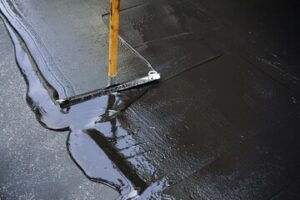A clean place of work is critical to business uninterrupted operation and revenue growth. Commercial Cleaning Baltimore provides the expertise and equipment necessary to keep your office looking great.

Services may include trash removal, sanitization of shared areas like restrooms and breakrooms, cleaning glass and window surfaces, washing and cleaning furniture, elements of decor, doors, walls, and other cleaning tasks.
Cleanliness is a major factor in an employee’s morale and work efficiency. Having a clean workspace allows them to concentrate on their tasks without worrying about clutter and other visual distractions. Moreover, they can save time when they don’t have to search for files or equipment because everything is organized and easy to find. Keeping workplaces clean and tidy also minimizes the risk of accidents and injuries. For instance, messy and cluttered facilities can cause tripping hazards while dust can interfere with the proper functioning of heavy equipment.
Commercial cleaning companies have the equipment, skills, and expertise to perform routine cleaning tasks like vacuuming carpets, mopping floors, dusting surfaces, emptying trash bins, and disinfecting common areas. They can also provide specialized services, such as cleaning and sanitizing electronic devices and HVAC systems.
Office cleaning services can help boost productivity by reducing the spread of germs and viruses, which can result in fewer staff sick days. It’s also crucial during the COVID-19 pandemic to reduce stress levels by ensuring a clean working environment and keeping employees safe.
A clean and well-maintained business makes a good first impression on visitors and clients, as well as helps create an excellent image for the company. It also sets a high standard for customer service and establishes confidence among clients. Moreover, it ensures that the company meets all CDC and OSHA guidelines.
A clean and organized working environment is crucial for businesses that want to maintain high productivity levels and a good reputation. However, it may be difficult for a company to maintain its cleanliness on a daily basis, especially with a busy work schedule. This is where a professional cleaning service comes in, which provides regular and recurring cleaning services. By hiring a professional cleaning service, you can leave the task of cleaning your commercial property to the experts and focus on your business. In addition, the service will ensure that your workplace stays hygienic, clean, and organized at all times, giving you a competitive edge over competitors. This will help you attract and retain customers.
Less Sick Days
In general, commercial cleaning companies work in a variety of areas, including offices, retail stores, hospitals, and schools. This means that they have to be familiar with the best practices for a wide range of situations. For example, they must know how to deal with the potential for hazardous materials to be present in the workspace, and they must understand how these materials could affect employees’ health.
One way that commercial cleaners help reduce sick days is by providing a clean and healthy workplace for employees. When germs are eliminated, employees will be able to keep their immune systems strong and will be less likely to get sick. In addition, a clean and tidy workplace will allow employees to concentrate on their work without distractions, which can lead to increased productivity.
A professional commercial cleaning company will also be able to identify problem areas in the office before they become too much of a nuisance. They will check for things like wet spots on walls, which can be a sign of serious structural problems that could lead to additional costs if left unchecked. If they notice any issues, they will report them to management right away so that the appropriate steps can be taken.
It is essential that businesses keep their staff as healthy as possible, particularly during the cold and flu season. This is because it can cost them billions of dollars in lost revenue if the workers have to take time off from their jobs. A professional commercial cleaning company can help to limit this impact by using the best practices for sanitizing areas of the business that are most likely to carry bacteria such as computer keyboards, telephones, sink faucets, bathroom taps and vending machine buttons.
If you are looking for a commercial cleaning company for your business, be sure to choose one that uses only qualified and experienced employees. Ask to see their resumes, and find out if they have been trained in the industry. It is also important to find out how they hire their employees, and whether or not they do background checks.
Increased Productivity
The more efficient a commercial cleaning company is, the faster they can get jobs done. This allows them to take on more clients and increase their revenue. It also means that clients will be satisfied with their services and will likely refer them to other businesses in need of janitorial services.
Workplace productivity is a key factor that managers and business owners are always looking to improve. They focus on employee training, resource allocation, and performance evaluations, but often overlook a very important element: workspace cleanliness.
Clean, organized workplaces help to reduce stress levels and create a positive working environment for employees. This can boost morale and lead to higher productivity, as employees feel motivated to work harder in an environment that is visually appealing and well-maintained.
One of the most effective ways to increase productivity is to use a national commercial cleaning service. Not only do they ensure that all areas are properly cleaned and sanitized, but they also provide other important services like waste removal and recycling. This can help companies stay compliant with local and state environmental regulations, which is crucial for maintaining a safe and healthy workplace.
A clean working space can also improve the efficiency of employees by reducing clutter and making it easier to find items. In addition, it can decrease the number of germs and allergens in the office and increase the lifespan of carpeting, furniture, and other materials. These are just a few of the many ways that commercial cleaners can make businesses more productive.
To increase the efficiency of your janitorial company, implement the right tools and software. Using a software solution designed specifically for the commercial cleaning industry can give you greater visibility into scheduling, site inspections, and more. With features like priority task management and timetamps, you can see exactly how long it takes your team to complete tasks at a client site and compare this against the average. This helps you to ensure that all of your team members are on track and providing the quality of service that your clients deserve.
Better Reputation
A commercial cleaning company can provide a lot of value to businesses that hire them. They can save time, increase productivity, and create a healthier work environment for employees. In addition, they can clean up air quality by removing pollutants from HVAC systems and improving overall indoor space cleanliness. These companies can also handle trash removal, floor care, and sanitization of bathrooms and eating spaces.
When searching for a commercial cleaning company, many people look to online reviews and feedback to make their decisions. If you have a solid reputation online, it can help you attract more clients and build your business. You can even use your positive reviews in your marketing strategies.
Customers are looking for good customer service and a high level of satisfaction when hiring a commercial cleaning company. Satisfied customers will become repeat clients and can act as brand ambassadors for your business. There are several ways to improve customer satisfaction, including offering rewards and discounts for loyal customers, communicating effectively with clients, and providing personalized services.
In today’s world, a reputation can make or break a business. Bad news travels fast and can damage a company’s reputation in an instant. This is why it’s crucial to have a strong customer service strategy and a process for handling negative reviews.
A well-thought-out plan can help you manage your business’s reputation, so that you can get more positive reviews and attract new customers. One way to do this is by creating an email autoresponder series that automatically asks your clients for a review after each cleaning appointment. This will not only improve your customer service, but it can also help you increase your online ratings and improve your search engine optimization.
If you are not already using a reputation management strategy, it is time to start. Negative reviews can deter potential customers from working with your cleaning company and can make them think twice about hiring you in the future. However, if you respond quickly to these negative reviews and take measures to fix the problem, it can give your customers confidence that you are willing to make things right.







